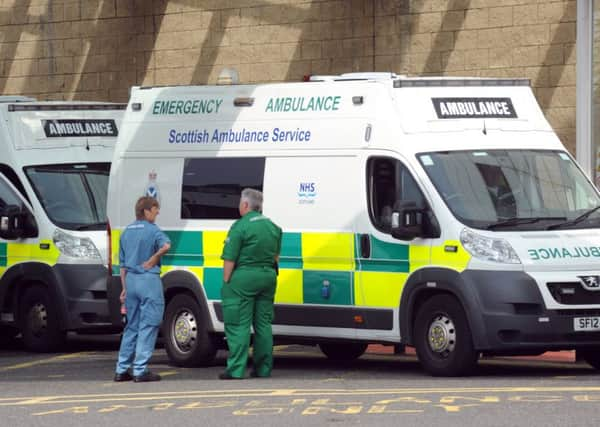How Scotland is tackling biggest killer of 15-44-year-olds – Dr Catherine Calderwood


Sirens wailing and blue lights flashing at catastrophic scenes are quickly understood by us all to signal the most serious and time-critical of situations. Perhaps you enjoy watching this on TV but the reality of trauma is far from entertaining. The consequences for those affected, and their families, can be devastating.
To improve trauma care and patient outcomes, the Scottish Trauma Network (STN) came together in 2017. Following the Scottish Government’s investment of £41.6m in the STN over five years, the story of care and survival for the 1,000 patients a year who sustain immediately life-threatening injury in Scotland will be transformed. This new system applies equally to the 4,000 more patients who suffer serious injury which may also have lifelong effects.
Advertisement
Hide AdAdvertisement
Hide AdScotland’s geography, weather and infrastructure are challenging. Delivering an equitable trauma service of the highest quality to all our citizens requires invention. For patients, research shows that rapid definitive treatment results in better outcomes. In trauma, this means expert emergency resuscitation and surgery with early focussed rehabilitation in the most appropriate facilities.
A network of hospitals will receive injured patients according to capacity and resources to expertly manage them. Four major trauma centres (MTC) will receive the most seriously injured patients.
Supporting them, will be trauma units (TU) and local emergency hospitals (LEH). As patient pathways are refined and teams increasingly work together across boundaries, Scottish Ambulance Service (SAS) and clinical staff learn from each other, with positive effects for patients.
Responding to terrorist attack
As the STN grows, we see new bespoke jobs created, with collaborative and innovative workforce changes and exchanges being adopted across the regional networks to support local services.
This is particularly important in the rehabilitation phase when patients are repatriated closer to home, and also from an educational aspect for staff experience and work satisfaction.
In light of recent terrorist events, a revised national Major Incident and Mass Casualty Plan will soon be implemented. It focuses additionally on the needs of children and the importance of psychosocial as well as physical care.
The new 24/7 trauma desk at SAS control centre activates and coordinates all trauma team tasking, including Coastguard, Mountain Rescue resources, and the combined aircraft, helicopter and rapid-response vehicles of ScotSTAR and the emergency retrieval team at Glasgow Airport, Medic 1 in Edinburgh, the Tayside Trauma Team, and the new ScotSTAR North team based at Aberdeen airport, as well as and increasing greater collaboration with the Scottish Charity Air Ambulance (SCAA).
Advertisement
Hide AdAdvertisement
Hide AdImproved rostering and increased consultant-delivered retrieval services mean that experts are now available when 84 per cent of such “Red Team” incidents occur, up from 55 per cent.
Trauma is the biggest killer of people aged 15 to 44. ‘Silver’ trauma, often caused by falls in frailer people – is on the increase as we live longer. The subsequent injury can often lead to a loss of independence and confidence.
If inadequately treated and not as fully rehabilitated as possible, people can be denied the futures they dreamed of, and the burden of care borne by us all may last for decades.
Scotland’s trauma network aims not only to save lives but to “give lives back”. Food for thought as you pull over at the side of the road to let an ambulance pass. With expert treatment at the scene, followed by time-critical intervention by a team of highly trained professionals and appropriate rehabilitation from day one, I am confident we can achieve that aim.
Catherine Calderwood is Scotland’s Chief Medical Officer and she is grateful to Martin McKechnie, National Clinical Lead, Scottish Trauma Network for his contribution.